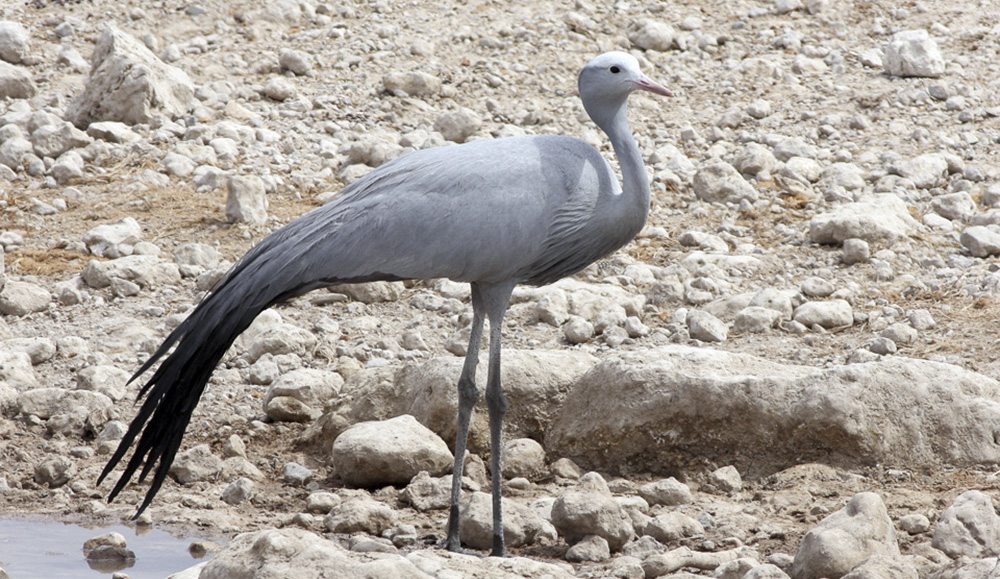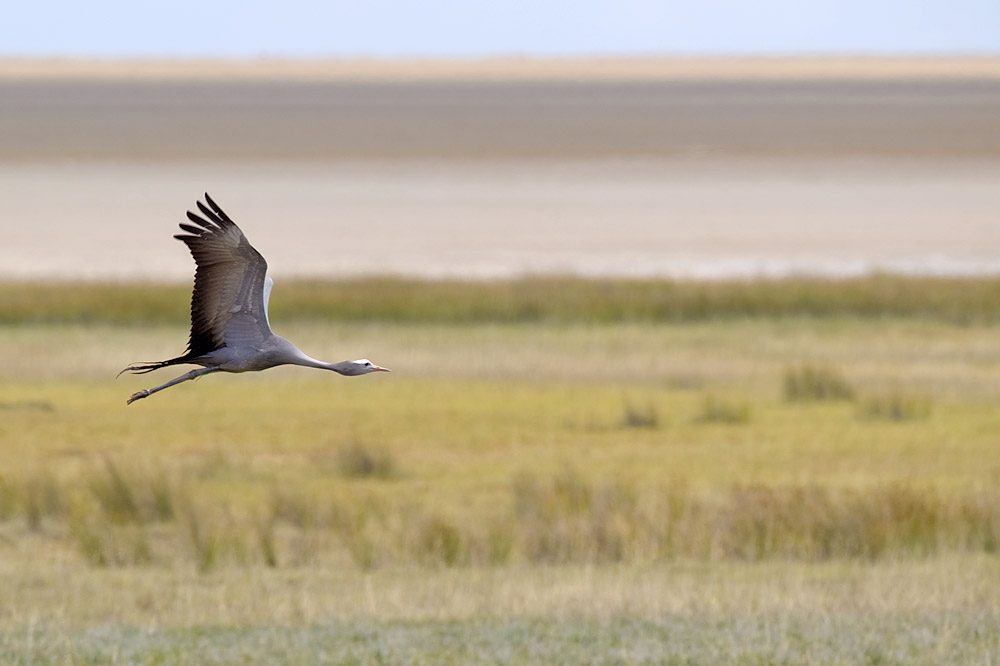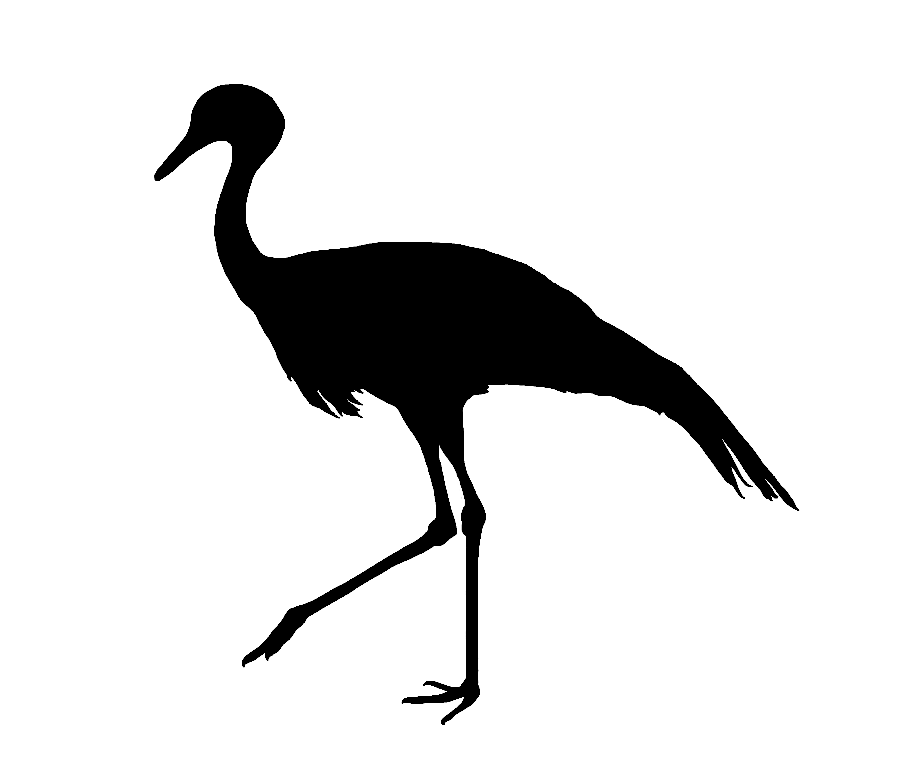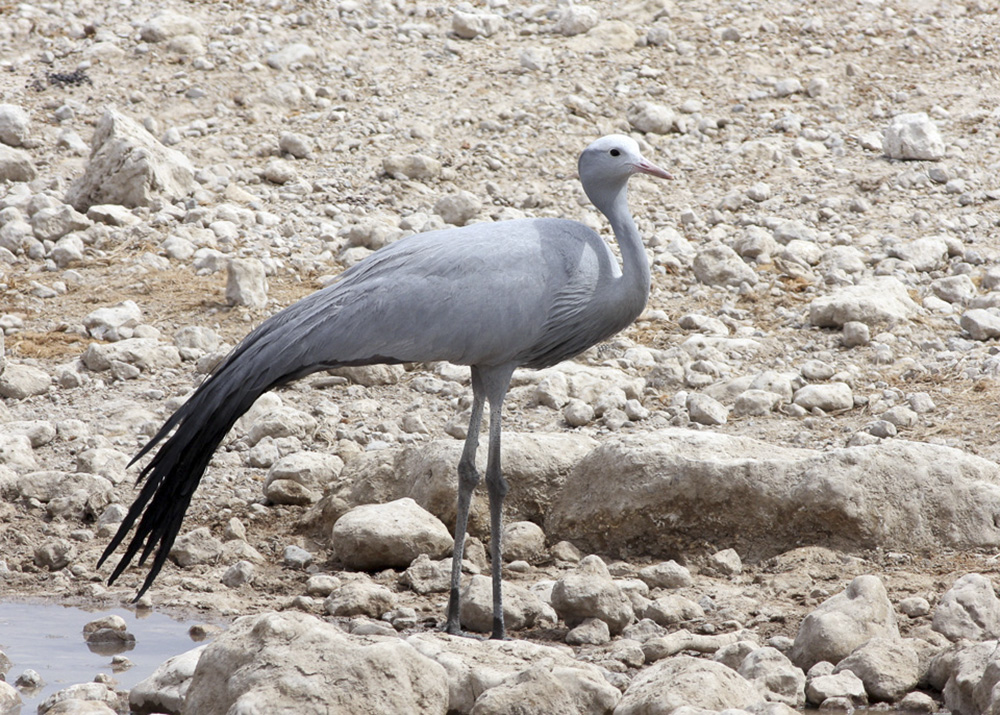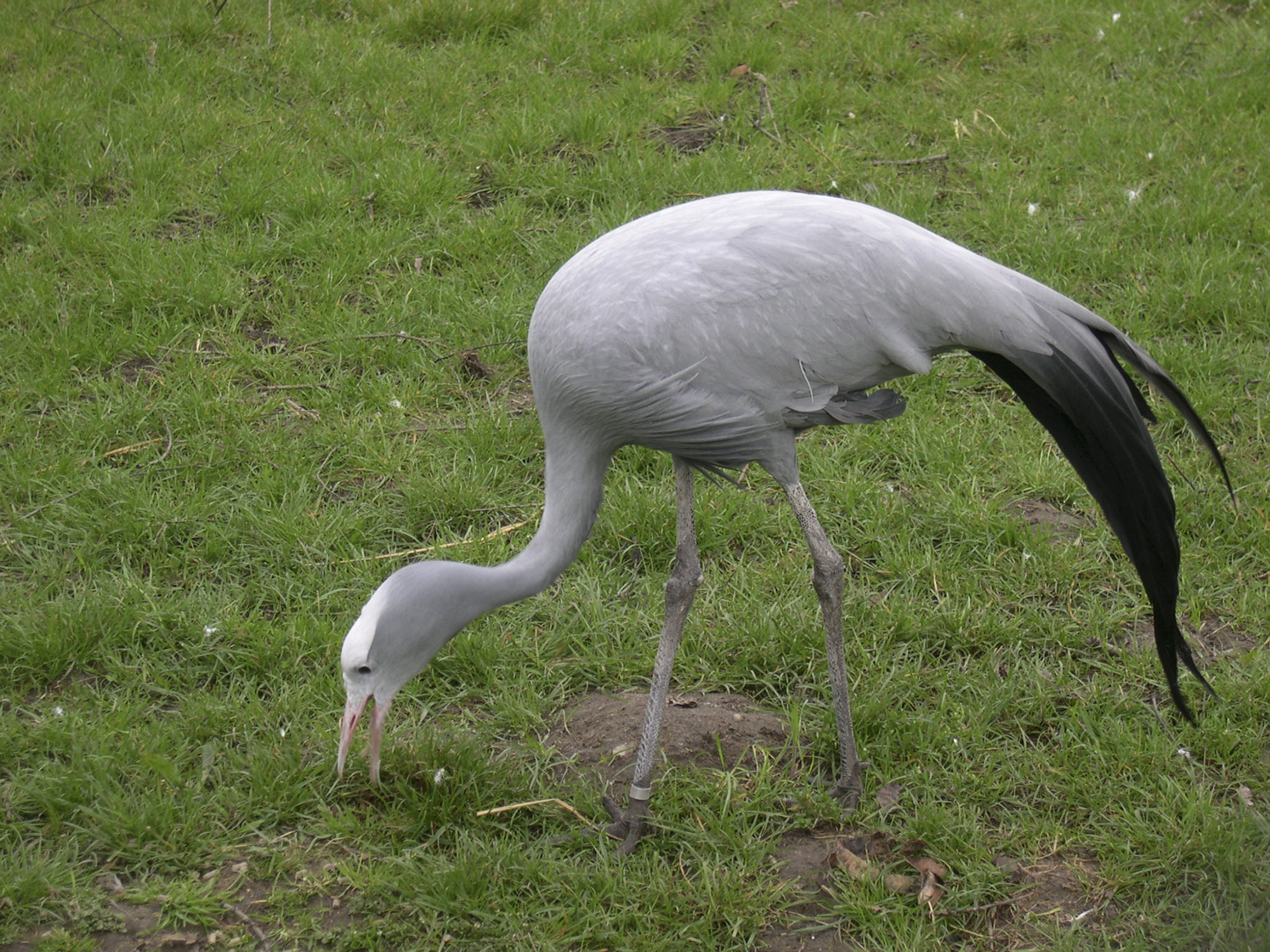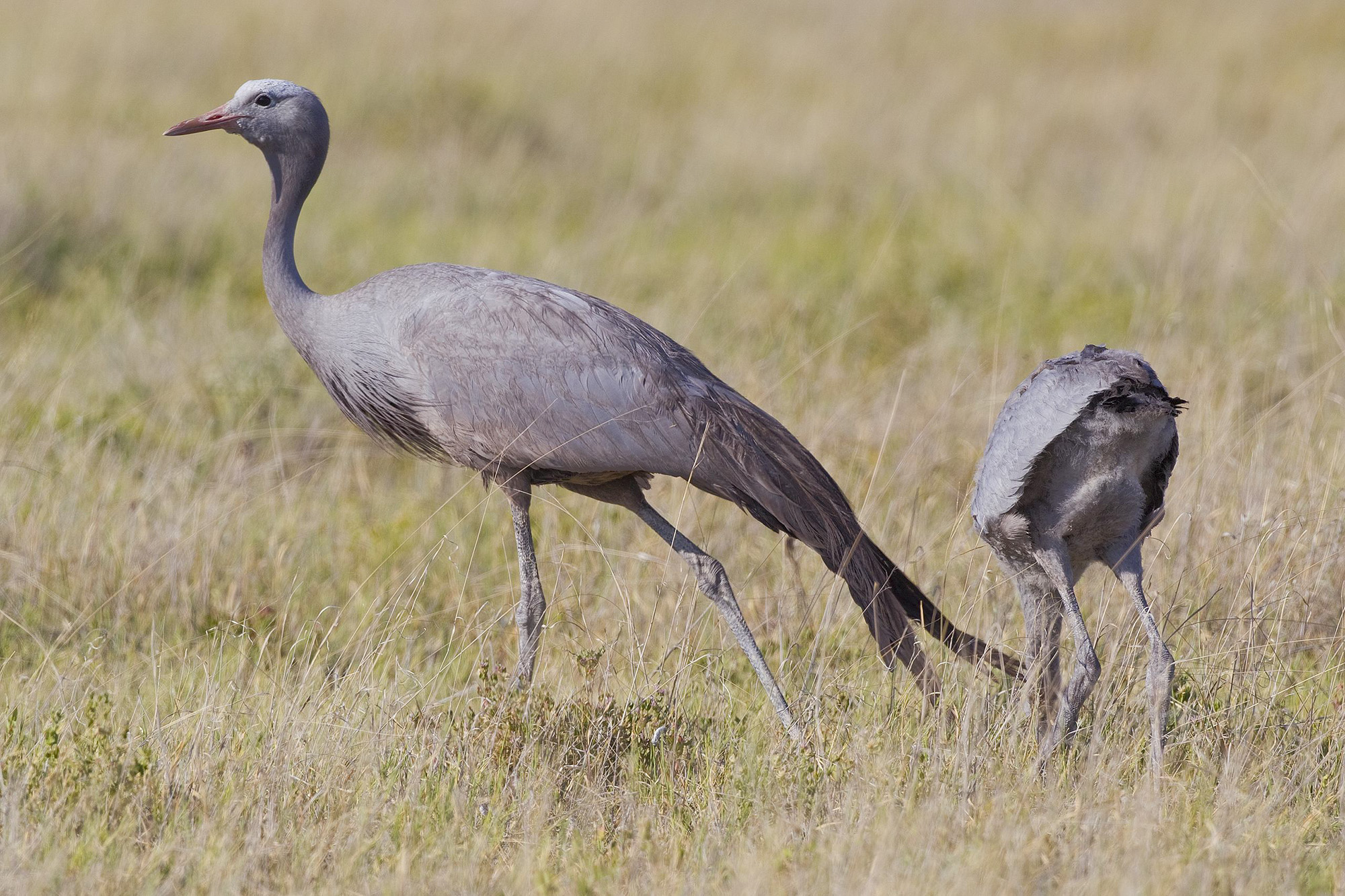Blue Crane
(Anthropoides paradiseus)
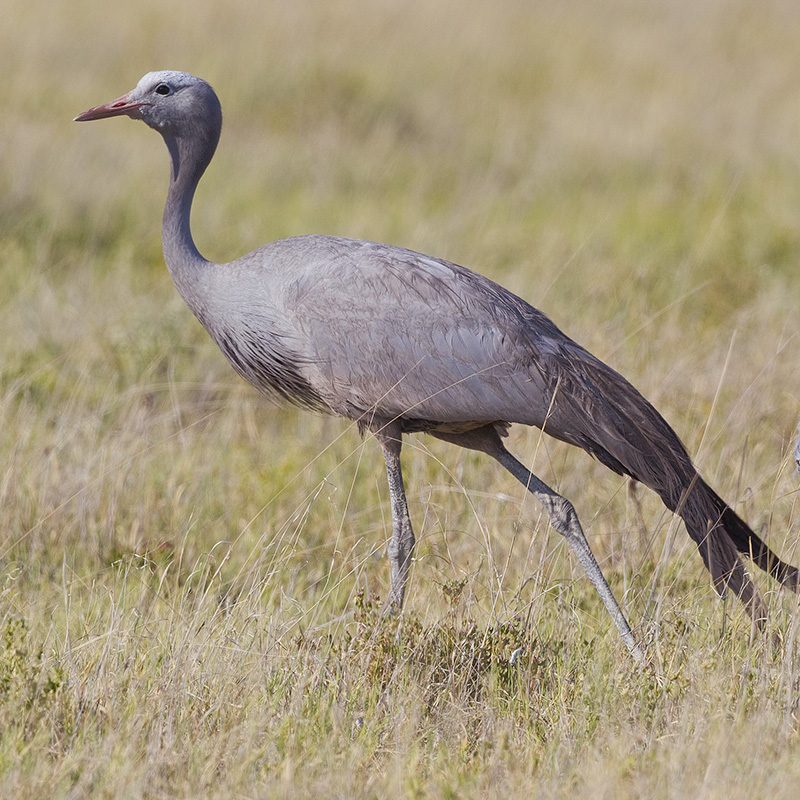
Drakensberg Montane Woodlands and Grasslands
STATISTICS
Height up to
1.2 meters
Weight up to
6.2 kgs
Lifespan
30 years
Wingspan
200 cm
Terrestrial - Highly Social - Loud Call - Powerful in Flight
The national bird of South Africa, the Blue Crane is a tall, ground-dwelling bird that is fairly small compared to other members of the crane family. Pale blue-grey in color, its long wingtip feathers trail the ground as it moves. Historically, the Blue Crane was most often found in dry, grassy upland areas with low human disturbance; however, today, they are thriving in the agricultural areas of the Western Cape.
A partial migrant, it breeds at higher elevations and then moves to lower altitudes, where it begins to congregate in flocks of around 50. Inherently social, the Blue Crane roosts at night, often alongside hundreds or thousands of its peers. This species pairs for life and eggs are laid on bare ground or grass. Two eggs are laid and are incubated by both parents for a period of approximately 33 days.
The Blue Crane is known for its dancing which it does by bowing, jumping, running or stick tossing. It dances during courtship but also to deal with tension, aggression and bonding. It forages in pairs and its short beak is an adaption to its preference for feeding in grasslands, rather than wetlands. The Blue Crane feeds on plants such as seeds, grasses, roots, tubulars and cereal grain as well as insects, frogs, worms, fish, rodents and reptiles.
BIODIVERSITY BENEFIT
Ecosystem Engineer
THREATS
Habitat Loss
Commercial afforestation of large tracts of nesting habitat.
Poisoning
Widespread poisoning on agricultural land.
Collisions
Collision with power lines and entanglement with fences.
PROTECT THE WILDARK 100
